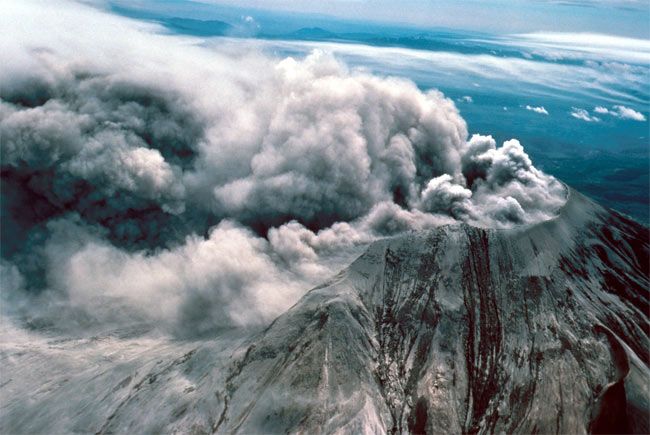A Leak Has Been Found in the Floor of the Ocean Near Mount St. Helens And It’s Terrifying
USGS: Ocean Floor Leak Near Mount St. Helens Raises Alarming Questions
The Pacific Northwest is celebrated for its natural beauty and geological complexity. Towering mountains, dense forests, and breathtaking coastlines shape the landscape. Beneath this serene surface, however, lies one of the most geologically active regions on Earth. Mount St. Helens, infamous for its catastrophic 1980 eruption, has been a focal point of scientific study for decades. Yet, a recent discovery by the U.S. Geological Survey (USGS) has taken researchers into uncharted territory: a leak has been found on the ocean floor near Mount St. Helens, and its implications are both unsettling and far-reaching.
This leak, detected during routine thermal imaging scans, is no ordinary geological feature. The escaping fluids contain high levels of methane, carbon dioxide, and chemical compounds indicating a direct connection to magma reservoirs deep beneath the Earth. Such findings suggest mounting pressure within the volcanic system, raising concerns about seismic instability or even another major eruption.

A Fragile System at Risk
Mount St. Helens sits near the Cascadia subduction zone, one of the planet’s most tectonically volatile regions. The subduction zone is capable of producing megathrust earthquakes with magnitudes of 9.0 or higher, which could trigger tsunamis and devastate coastal communities. The proximity of the ocean floor leak to this zone heightens the potential for a cascade of catastrophic events.
Adding to the concern is the environmental impact. Methane, a greenhouse gas over 80 times more potent than carbon dioxide in trapping heat, is escaping from the leak. Though current emissions are minimal compared to global levels, the presence of methane hydrates—crystalline structures trapping methane beneath the seafloor—poses a dangerous risk. A warming ocean or increased geothermal activity could destabilize these hydrates, creating a feedback loop of methane release and accelerating climate change.

A Growing Threat
Further investigations reveal that this leak is not an isolated incident but part of a larger network of fissures extending across several square kilometers. These fissures release superheated water, trace metals, and rare isotopes, hinting at geological activity from deep within the Earth’s mantle. Marine ecosystems in the area are already showing signs of distress, with some species abandoning the region while others behave erratically, likely due to the changing water chemistry.
The presence of harmonic tremors—seismic vibrations associated with magma movement—adds another layer of urgency. These tremors suggest that magma beneath Mount St. Helens is shifting, potentially signaling an underwater volcanic eruption. Unlike surface eruptions, underwater explosions can trigger tsunamis, destroy marine ecosystems, and cause widespread devastation.
Implications for the Planet
The discovery of this leak opens broader questions about Earth’s geological processes. Some researchers speculate that the leak may be linked to a “super plume”—a massive column of hot rock rising from the mantle. If true, this could signify a major geological event with the power to reshape entire regions.
The environmental risks are equally severe. Methane release from the leak contributes to localized ocean warming, and changes in water chemistry could lead to widespread marine die-offs. If other similar leaks are found, they could accelerate global warming and destabilize fragile ecosystems.

Racing Against the Unknown
Scientists are now deploying advanced robotics and monitoring systems to study the leak. These technologies allow for real-time mapping of the seafloor, chemical analysis of the released materials, and tracking of seismic activity. Preliminary findings indicate that the leak is growing, raising concerns about an increasingly unstable magma chamber beneath the region.
Efforts are underway to explore solutions, such as containment technologies to capture escaping gases or predictive models to forecast future activity. However, these challenges highlight the limits of human control over natural systems.
A Call to Action
The ocean floor leak near Mount St. Helens serves as a stark reminder of Earth’s dynamic and unpredictable nature. It underscores the importance of scientific research, disaster preparedness, and global cooperation in addressing such threats.
As investigations continue, humanity faces a critical choice: to ignore these warnings and hope for the best, or to confront these challenges with courage and innovation. The leak is not just a geological curiosity—it is a wake-up call, urging us to better understand the forces shaping our planet and to prepare for the uncertainties ahead.








